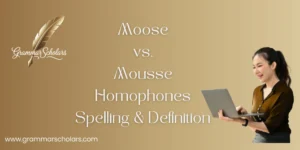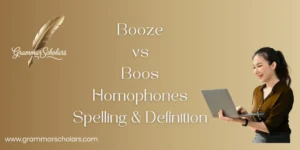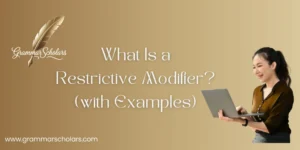Some English learners often confuse “it’s called” and “it called” – phrases that seem alike but differ in grammar. In the topic It’s Called vs It Called, both appear frequently in spoken or written communication, yet their meaning and purpose are not the same. One is a contraction used to name or label something (like “It’s called a telescope”), while the other is a past-tense verb phrase that describes an action.
Understanding these expressions clearly can improve both clarity and sentence structure.
“It called” works as a complete phrase where “called” functions as a verb in the past tense, often found in storytelling or reports (“It called for help”). It’s not naming something, but rather showing what the subject did. In contrast, “it’s called” implies a present-state identifier. Knowing the tense, context, and grammatical function makes a real difference in writing. These distinctions are essential for effective communication and help ensure your writing sounds both natural and correct.
Understanding the Basics of “It’s” vs “It”
“It’s” – The Contraction
“It’s” is a contraction of “it is” or “it has.” The apostrophe replaces the missing letters:
- It is → It’s
- It has → It’s
Examples:
- It’s raining outside. (It is raining outside.)
- It’s been a long day. (It has been a long day.)
“It” – The Pronoun
“It” is a pronoun used to refer to a subject previously mentioned or easily identified in the context.
Example:
- The phone rang. It was an unknown number.
What “It’s” Actually Means (Contraction Deep Dive)
“It’s” as “It is”
Used to describe a current state or condition.
Examples:
- It’s important to stay hydrated.
- It’s a beautiful day.
“It’s” as “It has”
Used to indicate possession or an action that has occurred.
Examples:
- It’s been a pleasure meeting you.
- It’s taken years to build this.
Why “It’s Called” is Often Incorrect
The phrase “it is called” is grammatically correct only when “it” is the subject acting on calling in the past tense.
Correct Usage:
- The owl hooted. It called into the night.
Incorrect Usage:
- It’s called a smartphone. (Incorrect when intending to name something.)
In naming contexts, “it is called” lacks the necessary verb “is” or “has” to form a complete thought.
Sentence Construction: ‘It’s Called’ Explained
Passive Voice and Naming
“It’s called” is commonly used in the passive voice to indicate the name of something.
Examples:
- This dish? It’s called paella.
- That song? It’s called “Imagine.”
Here, “it’s called” implies “it is called,” introducing the name of an object or concept.
Real-World Usage: Common Contexts for ‘It’s Called’
- Introducing Terms: It’s called photosynthesis.
- Referring to Titles: It’s called “The Great Gatsby.”
- Explaining Concepts: It’s called the placebo effect.
Grammar Rule Comparison: ‘It’s Called’ vs ‘It Called’
| Phrase | Meaning | Example | Correct Usage |
| It’s called | It is named | It’s called a smartphone. | ✅ |
| It called | It made a call (past tense) | It called for help. | ✅ |
| It called | Attempting to name something (incorrectly) | It’s called a smartphone. | ❌ |
Common Mistakes and How to Fix Them
- Mistake:It’s called a smartphone.
- Correction: It’s called a smartphone.
- Mistake:It’s called a smartphone.
- Correction: It’s called a smartphone.
Possessive “Its” vs Contraction “It’s”
- It’s: Possessive form of “it,” indicating ownership.
Example: The cat licked its paw. - It’s: Contraction of “it is” or “it has.”
Example: It’s been a long day.
Tip: If you can replace the word with “it is” or “it has,” use “it’s.” If not, use “its.”
Practical Writing Tips to Remember the Difference
- Substitution Test: Replace “it’s” with “it is” or “it has.” If the sentence still makes sense, “it’s” is correct.
- Possessive Check: If indicating ownership, use “its” without an apostrophe.
Contractions in Formal vs Informal Writing
- Formal Writing: Avoid contractions. Use “it is” or “it has.”
Example: It is important to note the findings. - Informal Writing: Contractions are acceptable.
Example: It’s important to note the findings.
Related Language Distinctions
- “They’re” vs “Their” vs “There”:
- They’re = They are
- Their = Possessive form of they
- There = Refers to a place
- “Your” vs “You’re”:
- Your = Possessive form of you
- You’re = You are
Final Examples Section: Real Sentences Analyzed
Correct Usage:
- It’s called a smartphone. (It is called a smartphone.)
Incorrect Usage:
- It’s called a smartphone. (Incorrect when intending to name something.)
Summary and Takeaways
Understanding the difference between “it’s called” and “it’s called” is essential for clear communication. Remember:
- Use “it’s called” when naming or identifying something.
- Use “it called” only when referring to an action performed by “it” in the past.
Quiz Section
Fill in the blanks with “it’s” or “its”:
- ___ been a long day.
- The dog wagged ___ tail.
- ___ important to stay hydrated.
- The company increased ___ profits.
Answers:
- It’s
- Its
- It’s
- Its
Final Thoughts
Language is all about clarity. The distinction between “it’s called” and “it called” may seem minor, but it can significantly impact how your message is received. Using “it’s called” correctly helps you introduce names, titles, or concepts with confidence. On the other hand, “it called” has a specific, limited use in the past tense-typically when describing a subject that made a call or sound.
To ensure your writing sounds professional and polished, always take a second to double-check your contractions and sentence structure. Small details like these make a big difference in effective communication. Whether you’re writing an academic paper, an email, or a blog post, using language precisely helps your audience understand you without confusion.
FAQs
What’s the correct way to say the name of something: “It’s called vs It called”?
The correct expression is “it’s called” (short for it is called). Use it when naming something, like a book, device, dish, or concept. For example: It’s called a smartwatch.
Is “It’s called” ever grammatically correct?
Yes, but only in specific contexts. “It is” the simple past tense of “to call,” used when “it” (a subject) acted of calling. Example: The wolf howled; it called into the night. It’s not correct when you’re naming something.
How can I tell if I should use “it’s” or “its”?
Try replacing the word with “it is” or “it has.” If the sentence still makes sense, use “it’s.” If not, and you’re showing possession, use “its.”
Example: It’s raining. (It is raining.)
Example: The robot lost its battery.
Why is “It’s called” considered passive voice?
“It’s called” is passive because the subject (“it”) is receiving the action (being called/named) rather than performing it. In active voice, you’d write something like: They call it a smartphone. In passive voice: It’s called a smartphone.
Can I use “it’s” in formal writing?
Generally, contractions like “it’s” are avoided in formal writing. Instead, use the full form-it is or it has. However, in informal, conversational, or creative writing (including blogs), using “it’s” is perfectly acceptable and often preferred for a natural tone.











